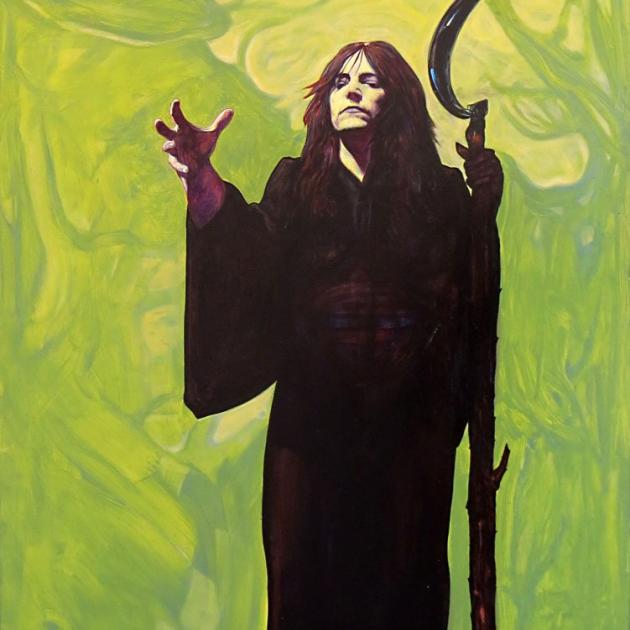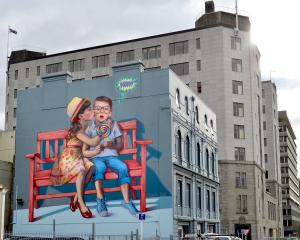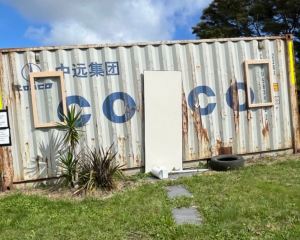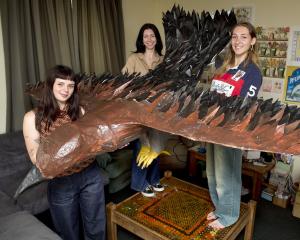
"Blessed are the Sick", Jason Greig (Brett McDowell Gallery)
There is a long-standing artists' joke that there is a ''printers' curse'' - that being to become a painter.
Many talented - sometimes even brilliant - printers give up their tools to pick up a brush, either as a temporary or a permanent move.
In Dunedin, the likes of Steev Peyroux and Inge Doesburg are fine printers who now stand at an easel, and in his current exhibition, Jason Greig shows that he, too, has the skills to work with paint as well as with ink.
To be fair, many of these artists always had painterly qualities in their printing style, and such is also the case with Greig.
His deep gothic images have long drawn their influences from the symbolist artists of the late 19th century, many of whom worked strongly in many media.
Greig's influences, from Rops to Dore to Redon, are still in great evidence in his rich, haunted works, and the paintings still retain the feeling that they could have easily been lithographs (the face of ''Geronimo Russell ... Peacekeeper'' has a distinctly printed appearance).
There has been no lessening of the dark emotions stirred by the art, and the different media has allowed for a more flowing, aethereal quality to the background of works such as In the Eleventh Hour.

''A Circular Christmas'' (Gallery De Novo)
Among the Christmas shows which start to appear around this time of year, Gallery De Novo's ''A Circular Christmas'' is always an annual highlight.
Whereas many galleries pull out stock for another view, or have a themeless group show, De Novo's concept of restricting all artists to identically sized circular boards regularly produces an intriguing and sometimes thought-provoking selection of works.
This year is no different - around 100 works festoon the gallery's main wall, in a wide array of styles and media, and there is much that is worthy of note and repeated viewing. Landscapes dominate, as might be expected, the works varying from John Santucci's intriguing cityscapes to the nostalgic, honey-drenched light of Philip Beadle's images.
Maria Kemp' painterly folds of land and Brian Dahlberg's precise, dry countryside are balanced well by the seascapes of Jan de Wagt and Michelle Bellamy's limpid lake scene.
Portraiture is, perhaps surprisingly, well represented, ranging from Andy McCready's illustration-inspired works through to the wanton vibrancy of Ewen McDougall's figures, by way of Frank Gordon's whimsical figures and Craig Freeborn's more ambiguous faces.
Angela Burns and Nicki Gilmore provide fine abstracts, and the impressionistic landscape-abstracts of Robert Ireland are also of note, as is an impressive night maritime scene by Nicki Stewart.

''Opening Exhibition'', Kirsten Andreae and James Cordery (Artica Gallery, Port Chalmers)
A new gallery is always a welcome sight and, after a slow dwindling in the number of galleries in the Port Chalmers area, the opening of a new artist-run gallery on George Street is worthy of note.
Kirsten Andreae, the artist behind Artica, walks that fine borderline between art and craft.
Her works are predominantly functional domestic items, from small tables to hand-crafted pens, all created from found and recycled objects.
Rimu, in particular, plays an important role in her creations, and many of the works are charming and elegant.
Her gilt-covered cast iron and wood mirror frames, in particular, are fine pieces, though perhaps the star of her opening show is a clear-topped occasional table simply yet elegantly presenting a large found moulding.
The gallery space is small, yet still has enough room to also display a few works by other artists - in the opening exhibition this space is taken by two gentle yet attractive paintings by James Cordery.
One of these is a landscape of St Paul's Rock, a butte which sits above the harbour at Whangaroa in Northland, but it is the other work, a study of a gaggle of geese, which catches the eye more effectively.












